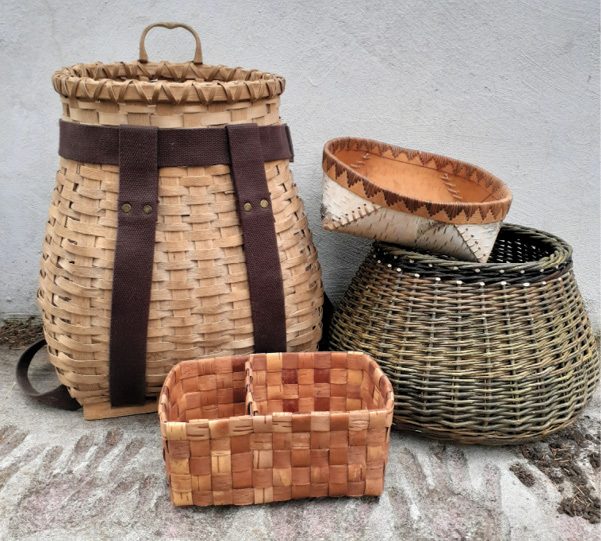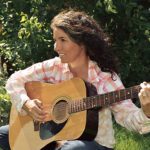Driving down a dirt road in late fall, I notice all of the long, straight willow shoots growing along the roadsides and underneath the powerlines where the brush cutter came and cleared earlier this year. The willows are strikingly colorful against the crunchy, brown leaves that cover the ground. In my mind, I’m already making a plan to come back and cut them as I drive by at 35 mph. Late fall and early winter are my favorite times to harvest the willow. They have done all their growing for the year, the leaves have dropped, and cutting them now will ensure that next year the coppiced plants grow back as branchless, straight shoots again.
Most plants have a prime season for harvesting. Here in northern Minnesota, some of the basketry plants include willow, birch bark, spruce roots, cedar bark and black ash. Those are just some of the commonly used materials, but if one is creative and likes to experiment, you really could weave with almost anything.
One basket maker I know did a lot of weaving when she lived in Chicago. There, she wove with old bits of wire and other “trash” from the city. She made beautiful artistic baskets using many traditional weaving techniques found all over the world. Later in her life she moved to northern Wisconsin and started working with pine needles and dogwood. She explains the shift in a very matter of fact sort of way. “I just weave with what’s around me,” she explains. She also once said “If you can bend it, you can weave it,” which has become a commonly quoted phrase among my small circle of basket making friends.
Basketry lends itself well to a lifestyle that interacts closely with the seasons and local environment. As winter sets in, the spruce roots become hidden under snow and frozen ground, and the birch bark glues itself tightly to the tree trunks. Eventually the willow will be buried under the snow banks too, and the stash of materials collected earlier in the year are all that’s available until the warmer weather returns.
Sometimes when I am out on a hike with other people, a tree will catch my eye. ‘Wow, those are extremely tiny lenticels on that birch bark,’ or ‘look how straight that cedar tree is growing,’ I will think to myself. I wonder if I’m the only one who thinks like this on a hike, while the others quietly appreciate the simple beauty of nature as we all walk along silently. I get a little self-conscious in my thoughts. I’m not pining for the next harvest, but certainly do look at things through a different lens. I’ve grown to notice and appreciate the specific characteristics I am observing as they relate to a particular ability that tree may have developed in its growth. As I continue to walk, I laugh at myself a little and appreciate the simple beauty of the world and the plants that grow, but also note the impressive spans of clear bark or prime root digging conditions. I also observe and wonder how “this or that” came to be.
As a basket maker, harvesting materials is a huge part of the job, and each plant has its own set of harvest etiquettes. There is a lot to learn about that plant and its life cycle, sustainable harvesting, rules and regulations, and how to process, prepare and utilize what is harvested, all of which is best learned from an experienced teacher, in my opinion.
I like to think about my friend who wove with old wires and things while living in Chicago, and the way we can interact with our local environment through basketry. The finished basket shows a little glimpse into the world where it was created and tells a bit about the maker’s life.
By Emily Derke
Emily Derke is a basket maker in the Artisan Development program at North House Folk School, where traditional craft is taught on the shore of Lake Superior.






